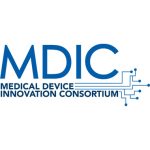This article is the second in a series of three that will address the products liability risks associated with medical devices and software failures. While software can transform medical device capabilities, its use also creates new products liability risks or changes the nature of existing risks. This series provides descriptions of some of the software-related trends I have observed as well as some prognostications about where software is taking us.
 The first article described products liability law and its application to software-driven medical devices. This second article, Medical Device Software & Products Liability: The Homefront, looks at the use of software in medical devices in non-clinical settings, particularly the home environment. It addresses software’s role in the home healthcare trend, explains the software-related risks that arise from home-use products, and discusses what manufacturers can do to make these products safer.
The first article described products liability law and its application to software-driven medical devices. This second article, Medical Device Software & Products Liability: The Homefront, looks at the use of software in medical devices in non-clinical settings, particularly the home environment. It addresses software’s role in the home healthcare trend, explains the software-related risks that arise from home-use products, and discusses what manufacturers can do to make these products safer.
Americans have a preference for receiving healthcare at home. Consider the transformation of healthcare delivery from the clinical setting to the non-clinical setting through home healthcare for the elderly and chronically ill and remote treatment of patients through “telemedicine.” According to a study conducted for AARP, 83% of adults want to remain in their homes for as long as possible.1 Not surprisingly, the Bureau of Labor Statistics (BLS) has identified home healthcare services to be one of the fastest growing occupations in the entire U.S. economy, with job growth for home health aides projected at 38% between 2014 and 2024.2 (By comparison, the BLS expects all occupations to experience growth at 6.5% during the same time period.3) As for telemedicine, according to a Harris online poll, 61% of consumers surveyed indicated that they “are open to using [virtual healthcare services]” and 16% have already done so.4 The American Telemedicine Association estimates that there were 1.2 million virtual doctor visits conducted in 2016, and 72% of hospitals and 52% of physician groups have telemedicine programs.
The numbers tell us that increasingly patients will be treated at home, a trend brought to you by software. To be clear, home healthcare is not a new concept; however, a new generation of software-enabled devices is changing the type of care that patients can receive at home while also changing the nature of risks associated with home healthcare. For decades, we have relied on products like patient aids and durable medical equipment – walkers, mobility aids, etc. – to enable patients to remain in the home environment. I refer to these products as “traditional” home-healthcare products. Yet, the modern surge in the number of people receiving care at home is made possible by a sophisticated class of technology-enabled products that give healthcare providers the capability to monitor and treat patients remotely for complex conditions that were once treated primarily in clinical settings. In other words, we have entered a new era of home healthcare. While this new generation of home-healthcare products shares some things in common with traditional home-healthcare products, there are also some remarkable differences between them.
Read Part I: Medical Device Software & Products Liability: An OverviewIt is important to note that the products associated with new-era home healthcare are not recognized as a discreet category of medical devices; indeed, many of them are not medical devices at all, technically speaking. Cell phones, computers, and web cameras are all important to the remote treatment of patients, but none of them meet FDA’s definition of a medical device.5 They are consumer products. This article, however, concerns itself with the sweeping category of home-healthcare products that are considered medical devices. These products are scattered throughout FDA’s product classification system and generally fit into one of two categories—they are existing technologies that have been retooled to make them “connectable,” or they are new medical devices that were developed specifically for the remote treatment of patients.
Regardless of their genesis, most medical devices giving rise to this new era in home healthcare rely heavily on software components, making them subject to the products liability rules that I outlined in the first article in this series. This second article examines the risk profiles of software-driven home-healthcare products. It also outlines some basic strategies that manufacturers of these products should consider in order to make their products safer for nonclinical settings and to mitigate products liability risks.
Understanding the Products Liability Risk Profile of Software-driven Home-healthcare Products
As I discuss in detail in the first article, every type of medical device has a unique products liability “risk profile,” or a collection of attributes that make devices more or less vulnerable to products liability claims. Understanding the products liability risk profile of a medical device is the important first step in managing the losses and costs associated with products liability—and, better yet, making the device safer and avoiding injuries altogether. When it comes to software-driven home-healthcare products, there are some underlying themes that are important to understanding their risks.
Characteristics of “New” Home-Healthcare Devices. Whether to empower patients or by practical necessity, modern home healthcare depends heavily on patient interaction with devices. In a sense, patients interact with all medical devices ─ such as when a patient operates a wheelchair or receives electrical pulses from a pacemaker. However, the degree and type of interaction required of patients by software-driven home-healthcare products is quite different from what has been required of them by traditional home-healthcare products, particularly as relates to the level of healthcare literacy, self-sufficiency, and initiative patients need to operate this new generation of products effectively and safely. Consider the example of the software-driven connectivity “hub,” a device that enables home monitoring of patients by collecting “patient-generated health data” and transmitting it to healthcare providers, who monitor their patients’ conditions remotely. This type of FDA-cleared device, different versions of which are currently being offered by several manufacturers, is commonly dependent on the patient’s self-reporting of medical measurements, such as blood glucose levels, blood pressure, and weight.
More broadly, the Office of the National Coordinator for Health Information Technology, which is a part of Health and Human Services (HHS), has recognized patient-generated health data as a “thing” and defined it to include information on health history, symptoms, biometric data, treatment history, lifestyle choices, and other information that is created, recorded, gathered, or inferred by or from patients or their designees to help address health concerns.6 A home monitoring system, or other product that makes use of this type of data, enables a patient to remain at home, but it requires the patient’s accurate and vigilant participation in his or her own care in order for the product to perform effectively and safely. This “do-it-yourself” aspect of home healthcare is pervasive among software-driven home-healthcare products and contributes to their risk profiles, as I discuss in greater detail below.
Smartphone software applications (“apps”) – particularly when they are accessories to medical devices as opposed to standalone products – also contribute heavily to the risk profiles of many of the latest home-healthcare products. In 2016, the number of patients enrolled in some form of digital health program supported by apps ─ some of which are considered medical devices and others that fall outside the purview of the FDA – experienced a 44% jump.7 With increased patient/device interactions and the proliferation of apps across the entire spectrum of the consumer marketplace, patients have come to expect that their medical devices ─ regardless of their purpose or sophistication ─ will also come with apps. Many manufacturers are attempting to meet patients’ expectations by creating apps for a variety of medical devices, including some medical devices that traditionally did not allow for any patient interface whatsoever (outside of their intended therapeutic functioning, of course). A manufacturer who makes a device faces a set of risks that are inherent to the nature and functionality of that particular product, but when the manufacturer attaches an app to it, the software and its capabilities can create a new dimension of risk not previously associated with the device.







